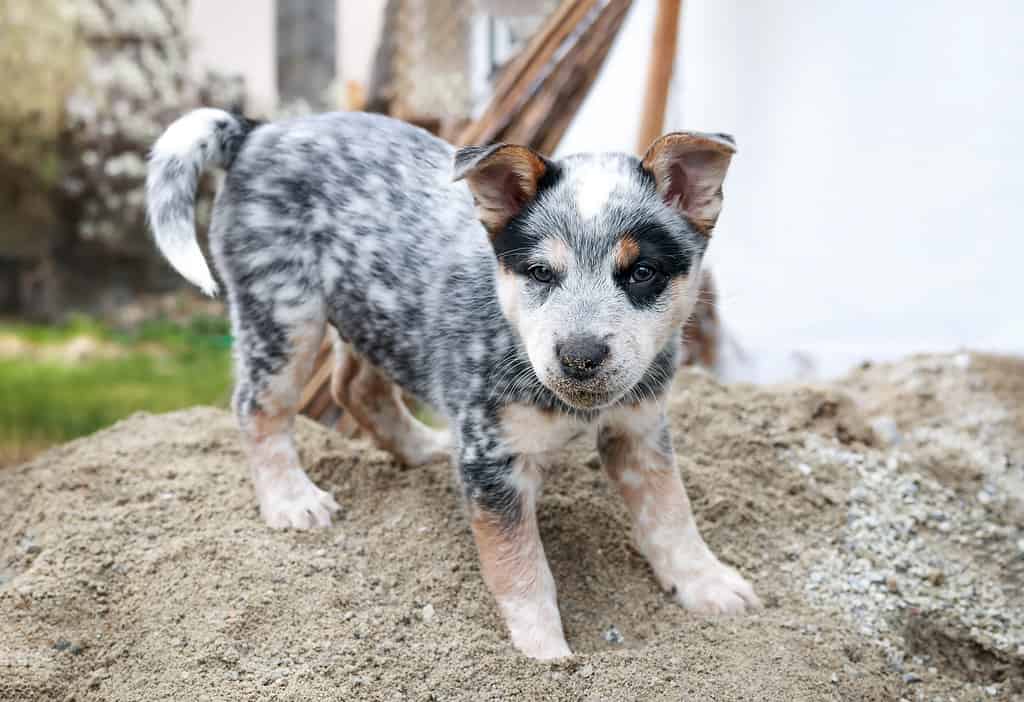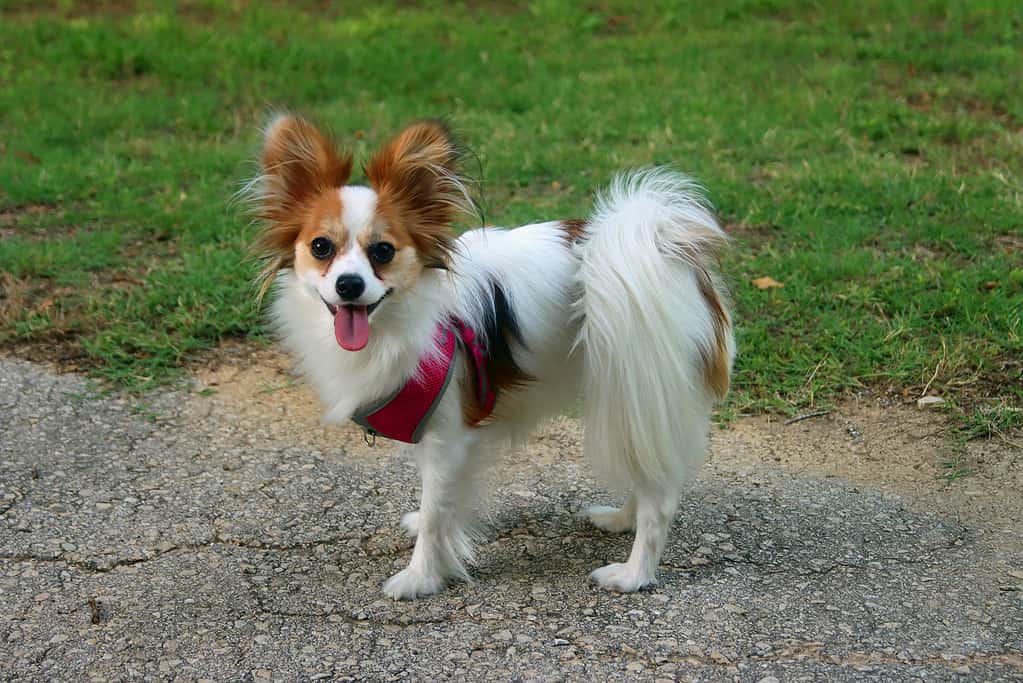Dog walking goes beyond being a form of exercise; it serves as a crucial element of your pet’s physical and mental wellness. Regular walks offer numerous benefits, including promoting your dog’s health, providing mental stimulation, and nurturing a strong bond between you and your pet. Also, walks aid in managing behaviors such as hyperactivity or destructive habits that arise from boredom.

Regular walks offer numerous benefits, including promoting your dog’s health, providing mental stimulation, and nurturing a strong bond between you and your pet.
©miss_j/iStock via Getty Images
Factors Influencing Your Dog’s Walking Needs
Breed
Different dog breeds have unique energy levels and physical capabilities, influencing their walking needs. High-energy breeds such as border collies or Australian shepherds, often used as working dogs, require extensive exercise to meet their mental and physical needs. Conversely, breeds like the basset hound or bulldog are less active and need shorter, less strenuous walks. Brachycephalic (short-nosed) breeds like pugs might struggle with lengthy or vigorous exercise due to potential breathing difficulties.
Age
Your dog’s age significantly affects their exercise needs. Young puppies have ample energy, but they also need rest for proper growth. Their walks should be brief but frequent, with substantial time for exploration and play. Adult dogs generally have more stamina for longer walks and can endure more intense exercise like fetch or agility training. Older dogs may have reduced stamina and potential health issues to consider, but regular, gentle exercise is essential for maintaining their health and mobility.

Young puppies have ample energy, but they also need rest for proper growth.
©Petra Richli/ via Getty Images
Health
Dogs with health issues such as obesity, arthritis, or heart disease often require modified exercise plans. Overweight dogs might need longer, slow-paced walks to aid weight loss, while those with arthritis could benefit from several short walks that are easier on their joints. Always consult with a vet before changing your dog’s exercise routine due to health conditions.
Weather
Weather conditions significantly influence a dog’s walking routine. Hot weather can pose dangers like overheating or burned paw pads, so walks should be scheduled for cooler times of the day or shortened. Consider investing in dog shoes for asphalt sidewalks during hot summer days. On cold, snowy, or rainy days, walks might need to be brief or replaced with indoor play sessions. Always ensure your dog’s comfort and safety during walks, regardless of weather conditions.
General Guidelines for Walking Frequency
Puppies
With their boundless energy, puppies should have several short walks and play sessions each day, with plenty of rest in between. Regular exercise helps puppies explore their surroundings, develop coordination, and learn proper behavior.
Adult Dogs
Adult dogs should be walked at least once daily, but more active breeds may require more. An average healthy adult dog may benefit from a 30-minute to an hour-long walk. These walks not only offer physical benefits but also provide essential mental stimulation. For active breeds like the border collie or Labrador retriever, over an hour of walking or other physical activities each day is necessary. In contrast, lower energy levels or smaller breeds that tire easily, such as Chihuahuas or Malteses, might be content with a leisurely 20 to 30-minute stroll around the neighborhood.
Senior Dogs
Even as dogs age and their energy levels decline, the need for regular exercise persists. Senior dogs benefit from shorter, more frequent walks to maintain muscle tone, joint health, and overall wellness. Regular gentle exercise can help keep senior dogs healthy and agile for as long as possible.

Even as dogs age and their energy levels decline, the need for regular exercise persists.
©iStock.com/Murchundra
Recognizing Signs of Insufficient or Excessive Walking
It’s crucial to monitor your dog’s behavior to identify if they are receiving insufficient or excessive walking. Understanding these signs can help you adjust their walking routine for optimal health.
Insufficient Walking Signs
- Weight Gain: Lack of sufficient physical activity can lead to weight gain, which is unhealthy for dogs. It can increase their risk of diseases such as diabetes, arthritis, and heart disease.
- Hyperactivity: Dogs, especially active breeds, can become hyperactive or even destructive if they don’t get enough exercise. This may present as restlessness, excessive barking, chewing on inappropriate items, or other disruptive behaviors.
- Anxiety or Depression: Regular exercise contributes to a dog’s mental well-being. A lack of it can result in signs of anxiety or depression, such as lethargy, lack of interest in usual activities, or changes in eating and sleeping patterns.
Excessive Walking Signs
- Exhaustion: Dogs will become visibly tired, start lagging behind during walks, or sleep excessively.
- Limping or Difficulty Moving: Over-exercising can lead to joint and muscle issues. If your dog starts limping, has difficulty getting up or down, or shows reluctance to move or play as they usually would, it could be a sign of excessive exercise.
- Resistance to Walks: If a normally enthusiastic dog starts resisting walks or becomes anxious when it’s time to go out, it indicates that they’re getting too much exercise and need more rest.
- Changes in Appetite or Thirst: Excessive exercise might lead to increased thirst or loss of appetite.
Making the Most of Your Dog Walks: Tips and Techniques
Walking your dog isn’t just about exercise—it’s also about bonding, learning, and exploration. Here’s how to maximize these aspects of your walks.
Leash Training
Proper leash training is fundamental to good walking etiquette. Your dog should ideally walk beside or behind you, not pull ahead or lag behind too much. Using positive reinforcement techniques, such as treats and praise, can be extremely beneficial in establishing this behavior.
Change Routes Regularly and Allow Exploration Time
To keep walks stimulating, try changing up your route occasionally. New environments offer fresh scents, sights, and sounds for your dog to explore, which can make the walk more exciting and mentally stimulating. Dogs explore the world predominantly through their sense of smell. Allow your dog some time during the walk to sniff and investigate their surroundings. This is not only mentally enriching but also allows them to leave their scent, which is a natural behavior for dogs.

Allow your dog some time during the walk to sniff and investigate their surroundings.
©iStock.com/Norma Chambers
Use Appropriate Gear
Ensure your dog is equipped with comfortable and safe gear. This includes a well-fitted collar or harness and a sturdy leash. For older dogs or dogs with certain health issues, consider special harnesses that provide more support. Reflective gear for nighttime walks can add an extra level of safety.
Hydration and Snacks
For longer walks or on particularly hot days, remember to bring along water and perhaps some dog-friendly snacks. This will help keep both of you hydrated and energized during the walk. Plus, a small treat can be a great reward for good walking behavior.
Pay Attention to Your Dog’s Signals
Most importantly, keep an eye on your dog’s body language during the walk. They will let you know if they’re feeling tired or overwhelmed, or if something has caught their interest. Recognizing and responding to these signals can ensure a positive experience for both of you.
The Role of Professional Dog Walkers: An Alternative to Consider
For owners who are too busy, physically unable to walk their dogs, or have pets requiring more exercise than they can provide, professional dog walkers can be a valuable resource. These professionals have the necessary expertise to handle a variety of dog breeds and behaviors, manage energetic or difficult dogs, and even help improve your dog’s leash manners. They ensure your dog gets regular exercise, contributing significantly to its overall health and happiness.
Ready to discover the top 10 cutest dog breeds in the entire world?
How about the fastest dogs, the largest dogs and those that are -- quite frankly -- just the kindest dogs on the planet? Each day, AZ Animals sends out lists just like this to our thousands of email subscribers. And the best part? It's FREE. Join today by entering your email below.
Thank you for reading! Have some feedback for us? Contact the AZ Animals editorial team.








